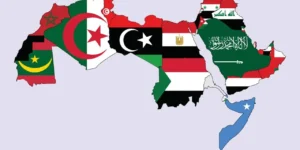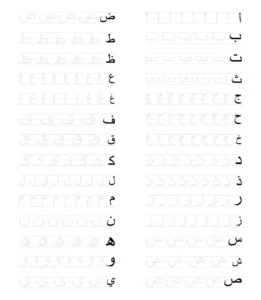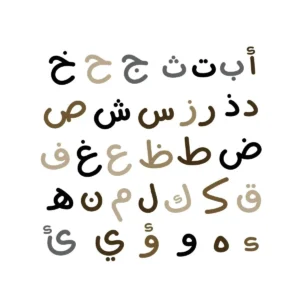Arabic dialects have been developed differently over time. Although Arabic mainly consists of main versions: Quranic, modern standard Arabic, classical Arabic, modern standard Arabic, and colloquial and everyday Arabic.
With more than 420 million native speakers worldwide, Arabic is one of the most important languages in the world. 28 countries use Arabic as their official language. Being one of the languages most used in literature, commerce, and business, Arabic can naturally have a significant number of speakers in the world.
Introduction to Arabic Dialects

The most common definition of Arabic dialects is a linguistic variety used in a particular geographical location. This means that the language (for example, Arabic) has changed by the group of people who use it.
The most common factor that groups of people often share is their location. However, other social factors, such as social class, occupation, and age, can also produce and influence dialects.
The term dialect can be an umbrella term for all the different varieties of languages that arise due to different influencing factors. The most widespread types of dialects include regional dialects, sociolects, and ethnolects.
Modern Standard Arabic
It is often called Modern Standard Arabic (MSA) in English and Arabic fields. People commonly use it in contexts such as writing, formal interviews, speeches, and official letters. It is similar to classical Arabic but easier to use.
- Native Arabic speakers generally do not make a clear distinction between the two Arabic languages, but few are proficient in the second. Modern Standard Arabic was developed in the early 19th century to become a modernized version of Classical Arabic.
- It was promoted by the pan-Arab anti-colonial movement, which appeared at the time as a means of communication that united all Arabs, regardless of their country of origin or background. religion Arabs often use a combination of slang and spoken Arabic dialects.
- For example, interviewers usually use spoken Arabic to ask prepared questions or make prepared remarks, then switch to conversational variations to add on-site comments or answer questions. Arab leaders make speeches in spoken Arabic and use spoken Arabic to make a point or simplify an idea for illiterate citizens.
- Another reason is that most native Arabic speakers cannot continue to speak Arabic for long. and they use spoken Arabic because that is what they are taught in their daily lives.
Key Dialects and Their Characteristics
Each Arabic dialect has its wealth of terms, expressions, proverbs, and slang that must be mastered to speak like a native speaker. The spread and growth of Arabic is precisely the result of the way of life of the first speakers, who, as nomads, traveled to the Arabian Peninsula.
Marriages between Arabs and other groups of native speakers contributed to the growth and spread of the language and created the various Arabic dialects and variants present today. The most important Arabic dialect that people use to learn is Egyptian Arabic.
Egyptian Arabic is the Arabic used in Egypt. And most Arabs understand this because Egyptian movies and TV series are popular. So if you don’t speak Arabic, it might be the easiest dialect to learn.
You should know that the two most difficult dialects to learn are Yemenite and North African. People in Lebanon, Jordan, Syria, and Palestine speak Arabic dialect. More than 30 million people speak. It includes many mutually intelligible varieties that are also spoken in parts of Iraq and eastern Syria
Comparing Dialects: Examples

Despite the infinity of Arabic dialects that create a spectrum with blurred boundaries, they can still be grouped into broad categories. The most common dialects include:
- Egyptian Arabic: With its distinctive accent and vocabulary, this dialect, spoken in Egypt, is widely understood thanks to the popularity of Egyptian media and entertainment.
- Levantine Arabic: Characterized by its unique pronunciation and vocabulary, as well as the incorporation of borrowings from French and Turkish, Levantine Arabic is the language of the Levant: Syria, Lebanon, Jordan, and Palestine.
Gulf Arabic
People speak Gulf Arabic in countries such as the United Arab Emirates, Bahrain, Kuwait, and Saudi Arabia. Gulf Arabic is blessed with a distinct accent and vocabulary, in addition to a predominance of loans from Persian and Hindi.
- Maghreb Arabic: people speak it in North African countries such as Morocco, Algeria, Tunisia, and Libya. It is known for its pronunciation, vocabulary, grammar, and inclusion of grammatical borrowings from Berber and At. French.
- Iraqi Arabic: known for its accent, vocabulary, and use of loans from Kurdish and Turkish, this dialect is spoken in Iraq.
How do you pronounce “The United Nations” in Egyptian, Moroccan, or Iraqi Arabic? It is almost the same word in all Arabic dialects: “al-umami al-Muttahida”. But how do you say “I want to eat something now”? In this case, there are as many ways of saying it as there are dialects.
- Egyptian: انا عايز آكل حاجة دلوقتي (Ana ‘ayez aakol haga dilwa’ti)
- Iraqi: أريد اكل شي هسة (Areed akol shi hissa)
- Moroccan: بغيت ناكل شي حاجة دابا
These are the same words that are often used in everyday life. They vary drastically from region to region. The dialect is this dynamic that makes you feel powerless in an airport or taxi situation. That is so frustrating, even after many semesters or years of study.
Choose the Right Dialect to Learn

Now that we’ve covered several different Arabic dialects. You may be wondering what would be the best approach to learning Arabic. Since many dialects are very different from each other, you might think that it would be good to master MSA before starting to learn any of the Arabic dialects.
And of course, many Arabic linguists make this argument, so don’t confuse dialects with MSA. There are benefits to learning one of the dialects. Some dialects may have certain characteristics that make learning more attractive than others. But in the end, only you can answer this question, because the answer depends on you, your goals, and your interests.
The answer to this question is yours; listen to the different dialects and see which one you prefer. Listen to songs, and watch movies or videos to decide. They are all beautiful, but the answer varies from person to person. Some will say that the Egyptian dialect is better, while others will disagree. So you have to choose for yourself.
- Egyptians speak the Egyptian dialect. And most Arabs understand this because Egyptian movies and TV series are popular. So yes, if you don’t speak Arabic, you have the easiest dialect to learn. Moreover, it is considered the most standard among other Arabic dialects.
Conclusion
If you are still a beginner, you should be distracted and look for the best ways to learn to read and speak Arabic dialects for beginners. At first, it may be difficult for you to decide which website or course is best for you. You may not even know where to start. E-learning Arabic will guide you every step of the way.